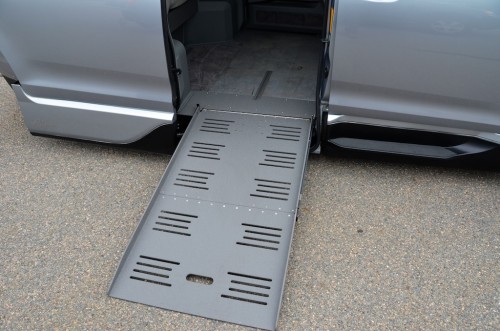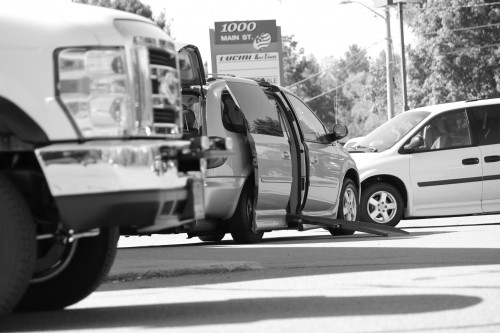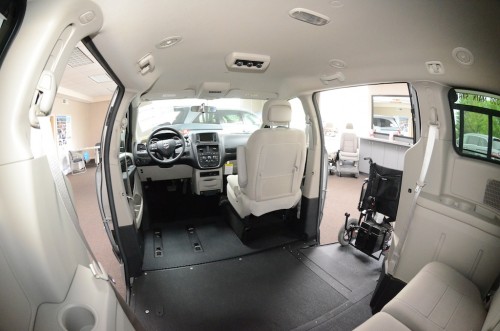As with any product that’s been around a while, wheelchair vans have evolved in a number of ways, with a variety of conversion designs and peripheral equipment like wheelchair tie-downs, portable/removable seats, and powered ramps with manual override. Overall, today’s accessible vans are more reliable, easier than ever to use, and safer.
If your child’s disability requires a wheelchair, and you’re in the market for accessible transportation, here are some important guidelines to help you shop:
One Size Doesn’t Fit All
A wheelchair van, whether it’s transporting an adult or a child, is tailored as much as possible to the physical requirements of the wheelchair user, with family lifestyle and budget taken into consideration as well.
You can always start your search for wheelchair vans online but will want to visit a local Mobility Center, you’ll work with a mobility consultant, whose expertise will guide you through the process, pointing out the technical differences between rear entry access and side entry access, the variety of wheelchair positions inside the cabin, ramp deployment possibilities, and special seating options.
The Child’s Size
A consultant at a reputable online dealership or local dealership will be incredibly thorough in compiling the details (like wheelchair width and height, your child’s height while sitting in the wheelchair, and other essential information), which should help identify the perfect van for your family.
Your child’s age and size are factors, too. If your child is a tall, brawny teenager with a permanent sports injury, a rear entry wheelchair accessible minivan should work better because of its wider and higher opening.
The Family’s Size
Consider the size of your family. A big family (5-7 children) might need the extra room provided by a full-size van. For smaller families, an adapted minivan should work beautifully, and both vehicle styles can be equipped for wheelchair accessibility. Keep in mind that even an only child will have friends who will join you for an occasional outing. With the right seating configuration, a side-entry minivan can transport up to seven (7) passengers (assuming two or three are youngsters).
The Child’s Condition
Along with wheelchair size, your child’s condition has tremendous bearing on vehicle selection. When a child with limited mobility travels with a ventilator or feeding tube, the vehicle must accommodate it. In such situations, rear entry access is often the better option.
Side entry vans require the wheelchair user to maneuver into position; an operating ventilator or feeding tube on an independent portable stand can easily make positioning awkward. Rear entry access eliminates the need to maneuver–the wheelchair and ancillary equipment roll directly into position from the back of the van.
Make sure the above determinants—wheelchair dimensions, your child’s specific physical attributes, family size and lifestyle—are addressed by the mobility consultant to zero in on the best-suited van.
Seating That Makes Sense
The van’s seating configuration should be based on the condition of your child and how you’d prefer to interact while in the van.
Seating For a Caretaker
If you or a caretaker needs to assist him or her, it would be helpful to have a seat right next to the wheelchair, as the front passenger seat can make interaction awkward.
The Front Passenger Seat
Now is a good time to talk about the front-passenger seat, which can be adapted for portability, so you can remove it completely. With a wheelchair docking system installed, the coveted front-passenger position is wheelchair-ready.
That said, size definitely matters here. The laws in some states restrict the size of a child riding in that position, with a typical recommendation of 50 lbs.+ and the ability to tolerate the force of a deployed airbag. A child with a frail or sensitive physical condition should be seated in the middle of the cabin for safety. Make sure to familiarize yourself with your state’s seat-belt laws for wheelchair passengers.
Part of the Fun
When there are several passengers in the van, middle seating in the cabin would put your child at the center of attention and always part of the fun. The side entry accessible van has an array of configuration possibilities, including jump seats and the potential for passenger seating in front, alongside, and behind the guest of honor in any accessible van.
Focus on the Future
As you explore the different wheelchair van conversions, plan for the future. How old is your child, and is he or she still growing? You’ll want to prolong the serviceability of this particular investment for many years, with as few—if any—adjustments as possible as your child grows.
At some point, your child will be eligible to ride in the front-passenger position, so you might want to arrange for a portable/removable front-passenger seat at the time of purchase. Consider the changes that may come over time, and discuss them with your mobility consultant.
You’re now better prepared to choose the ideal wheelchair van for your child and family, with essential features to research and questions to ask your mobility consultant. Go forth and shop!

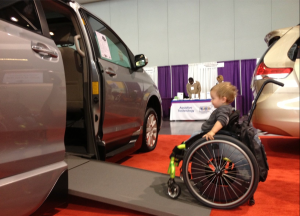

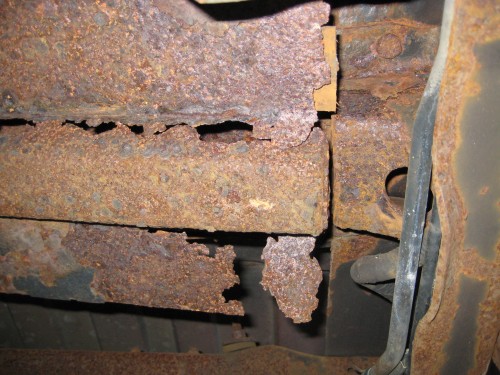 Once the rust is this bad there’s not much we can do other than replace the van.
Once the rust is this bad there’s not much we can do other than replace the van.